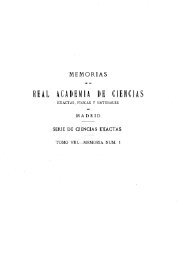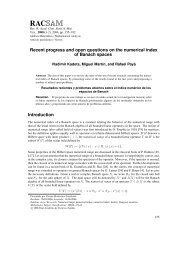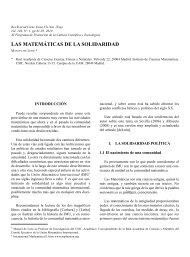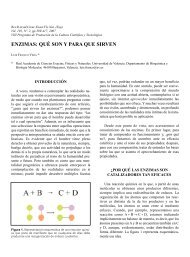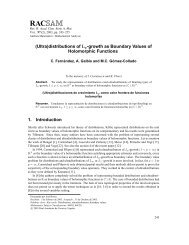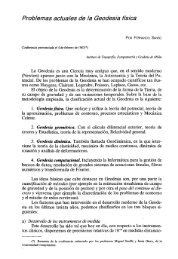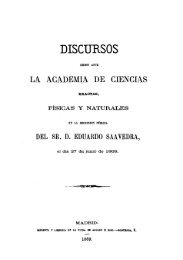The water footprint and virtual water exports of Spanish tomatoes
The water footprint and virtual water exports of Spanish tomatoes
The water footprint and virtual water exports of Spanish tomatoes
- No tags were found...
Create successful ePaper yourself
Turn your PDF publications into a flip-book with our unique Google optimized e-Paper software.
18 THE WATER FOOTPRINT OF TOMATO PRODUCTIONplanted in early September <strong>and</strong> harvested from Decemberuntil May or June. For the calculations theplanting date was assumed to be the 1 st <strong>of</strong> Septemberwith a growing period <strong>of</strong> 240 days (Table 2).<strong>The</strong> soils used in the case <strong>of</strong> greenhouse production whereassumed to be the same as in open-air production, exceptfor the cases <strong>of</strong> Almería, Granada <strong>and</strong> the two provinces inthe Canary Isl<strong>and</strong>s, since in these provinces, most <strong>of</strong> thegreenhouse production is done on artificial soils. <strong>The</strong>se soilsare constructed by extending a layer <strong>of</strong> 2 cm deep <strong>of</strong> manure,clay <strong>and</strong> s<strong>and</strong> mulch above them. <strong>The</strong> parameters <strong>of</strong>these soils were obtained from the study <strong>of</strong> F.I.A.P.A. Foundation(Foundation for Agricultural Research in eh Province<strong>of</strong> Almería) on the soils <strong>of</strong> greenhouses in the Poniente region<strong>of</strong> Almería province (Gil de Carrasco, 2001), <strong>and</strong> fromBertuglia (2008) for the province <strong>of</strong> Granada. In the CanaryIsl<strong>and</strong>s, the production is carried out also in a wide range<strong>of</strong> soils: natural, (local or transported) modified natural soilsor artificial (Nuez, 1995).<strong>The</strong> atmospheric dem<strong>and</strong> inside the greenhouse was considered70-80% <strong>of</strong> that outside (Orgaz et al., 2005) <strong>and</strong> noprecipitation was taken into account. Many <strong>of</strong> the greenhouseshave rain<strong>water</strong> collectors (Fernández, 2001). Mostly,rain<strong>water</strong> harvesting refers to the collection <strong>of</strong> rain thatotherwise would become run<strong>of</strong>f. Since consumptive use <strong>of</strong>harvested rain<strong>water</strong> will subtract from run<strong>of</strong>f, we considersuch <strong>water</strong> use as a blue <strong>water</strong> <strong>footprint</strong>.2.3. Calculation <strong>of</strong> the <strong>water</strong> apparentproductivity <strong>and</strong> exported <strong>virtual</strong> <strong>water</strong><strong>The</strong> <strong>water</strong> apparent productivity was calculated using themonthly tomato prices from the Agricultural <strong>and</strong> Statistics



